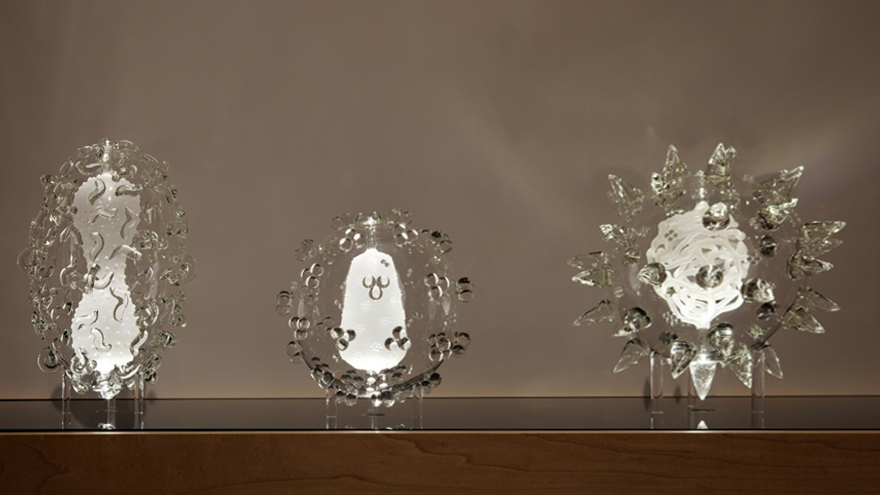The three virus-shaped sculptures in Luke Jerram’s Past, Present, Future (Smallpox, HIV, Untitled Future Mutation) found their way to the Museum of Art through an unconventional channel: the Biology Department. Professor Erin Eggleston worked with Museum of Art director Richard Saunders to acquire the triptych with the intention that it play a role across disciplines at the College. For her students, the work served as a visual aid that allowed them to see a virus’s physical properties in three dimensions, at a workable scale. For professors in other departments, she invited them to incorporate the sculpture into their own curricula; for example, in the study of medical humanities or the economics and history of disease and populations.
In 2024, the piece went on display in the museum’s fall exhibition, An Invitation to Awe, opening it up to a larger audience. We often associate the word awe with the overwhelming feelings of beauty, wonder, and fear we experience when faced with things too vast for our comprehension—like the soaring granite face of El Capitan or the infinite night sky. But the exhibition encouraged visitors to look in other directions, too—in the case of Past, Present, Future, down to the submicroscopic level. Museumgoers were able to contemplate the appearance of organisms, thousands of times magnified, that have wrought devastation on human populations over centuries but were too small to be visualized until the invention of the scanning electron microscope.
Perhaps the greatest feeling of awe—here, in the sense of terror—is provoked by the rightmost sculpture of the three: “Untitled Future Mutation.” Though its spiky surface recalls that of SARS-CoV-2, this isn’t a known virus; it is instead the artist’s idea of what the next insidious virus might look like, a placeholder for the inevitable. The glowing shape stirs emotions related to both the past and the future, recalling the COVID pandemic and serving as a reminder—a memento mori of sorts—of what will someday come.
Images of Luke Jerram’s glass virus sculptures can be widely found in news stories, medical journals, and textbooks.

Leave a Reply